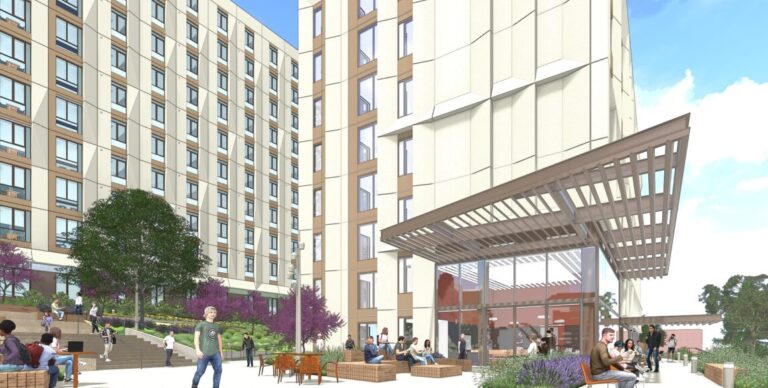Bridging the Public-Private Divide in Behavioral Health Facility Development

As the pressure on mental health systems grows, behavioral health has become a key infrastructure challenge, one that cities, states, and investors can no longer ignore. Demand is surging. Public investment is accelerating. Private capital is moving in. From crisis care to telehealth and housing-first programs, systems are expanding fast.
States are responding in force. In May 2025, California announced $3.3 billion in Proposition 1 funding to expand behavioral health infrastructure, including over 5,000 residential beds and more than 21,800 outpatient treatment slots. Massachusetts, meanwhile, is investing in long-term capacity with $12.4 million in grants to support behavioral health students in unpaid internships and field placements.
Still, building the systems needed to meet this moment is far from straightforward. Public agencies and private partners speak different languages. They operate on different timelines, with different mandates, and often incompatible expectations. Without alignment, even the best-funded projects can stumble, or fail to launch at all.
Bridging that divide requires more than goodwill. It takes strategic planning, clearly defined roles, and a shared understanding of what’s at stake—not just for budgets, but for the communities these systems are meant to serve.
Public Sector: Building a Framework the Market Can Work With
Public agencies play a leading role in behavioral health investment. They carry the mandate to service, shape policy, and can hold a significant amount of the funds. But turning dollars into deliverables isn’t easy. Too often, momentum stalls before procurement even begins.
“A lot of the behavioral health pieces are funded by the government or grants,” says Eric Hoffman, Vice President and National Healthcare Sector Leader at PMA. “Those are often done by patient advocates that might not have the experience or skillsets to transition their vision into real estate, design, and construction. This leads to the inadvertent creation of a set of criteria that either handcuffs or limits the ability to engage the private market to execute in a manner that is strategic, forward-looking, and drives value.”
Well-Meaning, But Misaligned
This misalignment between policy goals and market feasibility is a common pitfall. Grant requirements can dictate location, services, and scope long before market realities are considered. This often results in RFPs that are too rigid, too slow, or simply not compelling enough to draw strong private partners.
“You want to generate buzz and alignment with builders, owners, and operators,” Hoffman explains. “You want really good organizations that are going to bid. That gives you options. But when you award it, it has to have a business model that’s sustainable.”
To get there, public owners should prioritize:
- Align funding requirements with operating practices, needs, and resources
- Clarity of process – define timing, scope, and risk up front
- Structured approvals – build confidence in how decisions will be made
- Balanced risk-sharing – ensure both sides can win (or lose) fairly
- Internal capacity skillset checks – know if your team can lead, and where support is needed
That last point is critical. Too often, public entities move forward without a full picture of funding constraints, delivery risk, or operational realities. As Hoffman says, “They’re getting silos of expertise, but they don’t have somebody pulling them in together from a holistic standpoint.”
That’s where bringing in a consultative partner early can shift the outcome. Someone who understands the funding, the market, and the delivery lifecycle can help translate vision into something the private sector can actually build.
Private Sector: Creative Partnerships and Financing Strategies
For private developers and operators, behavioral health is a space full of potential, but it requires more than showing up with a team and a balance sheet. Engaging with the public sector means navigating policy opportunities and constraints, variable funding structures, and long timelines with a strategic, collaborative mindset.
“They [private developers] want the product that comes from the public side to be as clean and market-supportive as humanly possible,” says Eric Fedder, Project Director at PMA. “They want to mitigate risk.” But in this space, clean is often challenged by the funding constraints and the gap in expectations between the public and private side. Public RFPs can be delayed, funding may be restricted, and operational clarity is often still in flux.
Partnership Over Procurement
The most effective private players don’t treat these projects as one-off bids. They approach them as creative partnerships—bringing operational know-how and delivery expertise to the table, while respecting the regulatory and social context that shapes the work.
That starts with understanding the capital stack. Grants, government loans, and philanthropic dollars may fund construction, but operational sustainability must be built in from the start. Public-private partnerships (P3s) can offer a viable path, blending public oversight with private-sector agility. But they come with strings attached—procurement rules, compliance obligations, and reputational stakes that can’t be ignored.
To navigate it all, private stakeholders should focus on:
- Identifying partnership opportunities: Bring together development, clinical, and service partners who understand the full continuum of care
- Consider different financing options: Explore blended capital sources that support both upfront investment and long-term operations
- Staying aligned with public priorities: Ensure solutions are not only viable, but also equitable, compliant, and linked to a broader mission
Above all, successful teams engage early. Influence is limited once the RFP is out the door. The earlier private partners understand the policy intent and can demonstrate value, the more likely they are to build something that works for both sides.
Strategic Visioning: The Missing First Step
Too many projects rush into design or chase funding before taking the time to define what they’re actually trying to achieve. Strategic visioning brings focus early in the process. It helps align intent with practical delivery before critical decisions get locked in or opportunities are missed.
“A lot of it is really just truly defining what you’re trying to do and being very realistic about it,” says Fedder. “Who are you trying to serve? How do you want to serve them? How does the business model work? How does it stay open once we build this beautiful building?”
This work often begins before a grant is even written. At PMA, our team partners with public agencies and private developers to map project goals, assess long-term viability, and bridge disconnects between funding requirements and operational realities. That includes coordinating consultants, shaping financial models, and identifying potential risks before they become blockers.
The value is in aligning ambition with reality. When timelines, expectations, and outcomes are clear from the start, it reduces friction later and expedites speed to market. A strong strategic vision gives the rest of the process room to move faster, with fewer surprises.
Closing the Gap
Building effective behavioral health infrastructure takes more than capital or policy. It takes alignment.
When public and private sectors plan together—early and with a shared understanding of what success looks like—projects have a better chance of delivering real impact. The opportunity is here. Getting it right starts with how we work together.
Connect with this article’s contributors:
Andy Bohnert, Vice President
Eric Fedder, Project Director
Eric Hoffman, Vice President
Cal Poly Transforms Student Housing with Modular Construction
Cal Poly is pioneering modular student housing construction to address critical shortages, marking the CSU system's first modular housing initiative.




